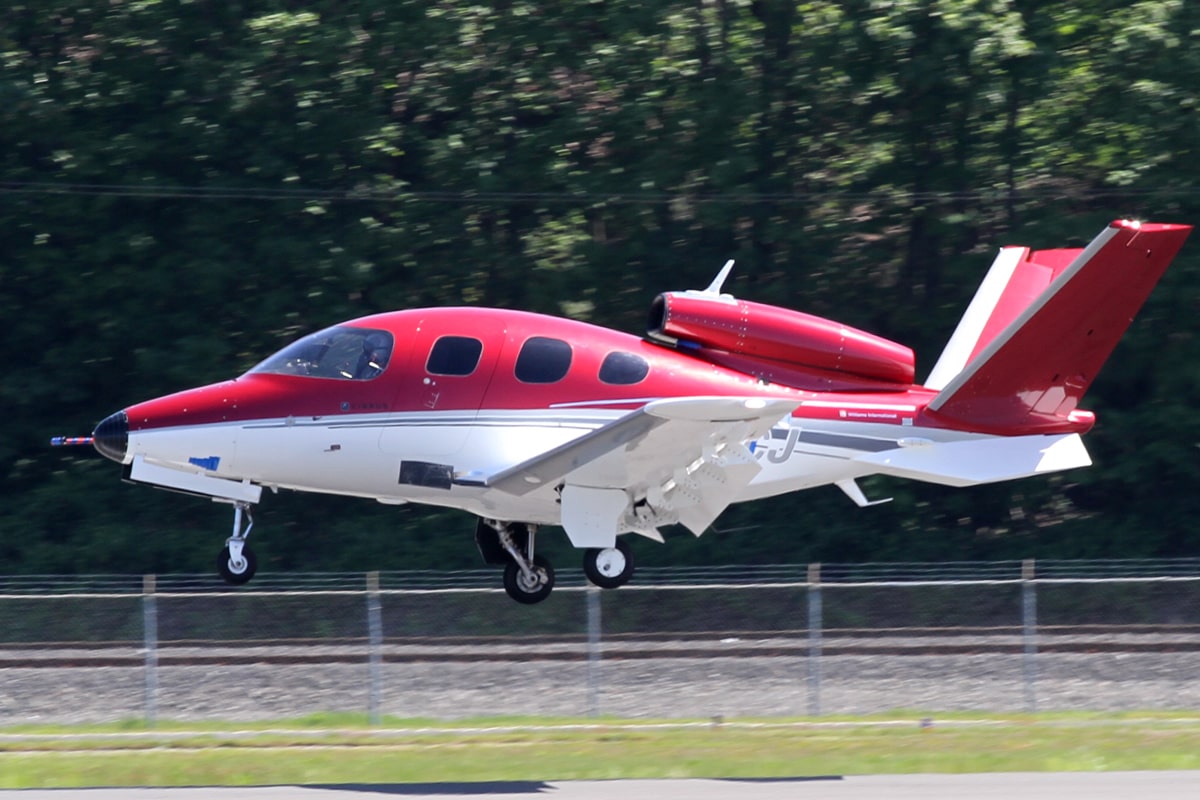The 6 Different Types of Pilot Licenses
If you ever have dreams of flying an aircraft or are about to take the bold step, you need a license to operate a registered aircraft. In the U. S., different license types are obtainable, allowing you to fly in different situations. All license types come with their privileges and limitations, so you must choose the right one for your needs.
This article will discuss the different types of licenses obtainable in the U. S., their requirements, limitations, pros, and cons.
What is a Pilot License?
A pilot license or certificate permits a pilot to operate an aircraft under specific terms and conditions. The word “pilot license” is usually used synonymously with “pilot certificate,” so we will use both words interchangeably in this article.
The Federal Aviation Administration (FAA) is responsible for certifying pilots. Usually, the rules and requirements for getting a license will differ depending on the type of certification you apply for.
What are the Different Types of Pilot Licenses?
Several types of pilot certificates exist under the FAA. The main types of pilot licenses obtainable are:
1. Student Pilot License
A student pilot certificate is designed for the initial training period, allowing a student pilot to fly a registered aircraft under the supervision of a flight instructor.
The student can also fly solo (as a pilot in command) after the endorsement of a licensed flight instructor. To get certified as a student pilot, you must file an Integrated Airman Certification (IACRA), but first, you must meet the FAA requirements for this license.
Eligibility Requirements
The requirements for obtaining a student pilot license are:
- An applicant must be at least 16 years of age
- Applicants must be at least 14 years old for the operation of a glider or balloon
- Must be able to speak, write, and read English fluently
- You must obtain a medical certificate from an Aviation Medical Examiner (AME) to ensure you are fit to fly
- Pass ground school exams and assessments
Limitation
There are certain limitations to the use of a student pilot license. A student pilot cannot act as PIC on an aircraft:
- Carrying a passenger(s)
- Carrying property for compensation or higher
- Flown for compensation or hire
- With a flight or surface visibility of less than three statute miles during daylight hours or five statute miles at night
- When the flight cannot be made with visual reference to the surface
Pros
- It allows a student pilot to fly solo following the endorsement of an instructor
- It allows a student pilot to accumulate the required solo flight time for a private pilot license
Cons
- You cannot fly as PIC under certain conditions until you finish your student pilot training and get a higher license
2. Recreational Pilot License
A recreational pilot license allows a pilot to fly for fun and pleasure. It will enable pilots to fly small and large single-engine aircraft for pleasure.
Eligibility Requirements
The requirements for a recreational license are:
- Applicants must be at least 17 years of age
- Must be able to read, write, and understand English
- Must pass the written and practical FAA exams administered by an examiner
- Has to hold either a student or sport pilot certificat
- Applicants must have at least 30 hours of flight time
Limitation
A recreational pilot cannot fly in an aircraft:
- Carrying more than one passenger
- As PIC of an aircraft certificated for more than four occupants, more than one engine, with an engine of more than 180 hp (except certified in the rotorcraft category), or with retractable gear
- Carrying a passenger or property for hire or compensation
- In Class A, B, C, and D airspace
Pros
- It is very affordable
- It requires only 30 hours of flight time, which is less than the requirement for a private pilot license
Cons
- There is a limit to the type of aircraft you can fly, the number of passengers you can carry, the distance flown from the departure point, time of day, flight into controlled airports, etc.
3. Private Pilot License
A private pilot license allows pilots to fly any aircraft they are rated for. The flight training includes aircraft maneuvers, navigation, emergency procedures, and cross-country flight planning. Hence, private pilots can carry friends, family, and other non-commercial passengers
Eligibility Requirements
The requirements for obtaining a private pilot license are:
- Applicants must be at least 17 years of age
- At least 16 years of age for a rating in a glider or balloon.
- Must be able to read, speak, write, and understand English
- Hold a student pilot, sport pilot, or recreational pilot certificate
- Log at least 40 hours of flight time
Limitation
As a private pilot, you cannot:
- Fly as PIC or second in command for compensation or hire
- Carry passengers for compensation or hire
- Fly in instrument meteorological conditions (IMC)
Pros
- It offers more opportunities to act as PIC as long as you meet specific requirements
- You can participate in search and location missions and request reimbursement for operating costs
- You can carry as many passengers as long as it is not for hire or compensation
- A private pilot can fly a multi-engine aircraft and fly across countries
Cons
- You cannot fly for compensation or hire
4. Sport Pilot License
A sports certificate allows pilots to operate aircraft in the Light Sport Aircraft (LSA) category. Typically, all you require medically is a third-class medical certificate or a U.S. driver’s license. Under meteorological conditions, Sport pilots can fly in class E and G airspace during daylight hours.
Eligibility Requirements
The requirements to obtain a sports pilot license are:
- Applicants must be at least 17 years old
- It must be at least 16 years for gliders or balloons
- Be able to read, speak, write, and understand English
- Hold at least a third-class medical or a current and valid U.S. driver’s license
Limitation
You may not act as a PIC of an LSA:
- Carrying a passenger or property for compensation or hire
- In furtherance of a business
- Carrying more than one passenger
- Flying at night
- In Class A airspace
- In Class B, C, or D airspace unless you have met the requirements specified in § 61.325
Pros
- One of the most accessible certification
- It doesn’t require medical certification if you have a valid U.S. driver’s license
- It is more affordable than a private pilot license
Cons
- You can only fly light sport aircraft
5. Commercial Pilot License
A commercial pilot license permits a pilot to fly for commercial purposes, for hire, and compensation. A commercial pilot can carry passengers and properties and get paid.
Eligibility Requirements
The requirements for a commercial certificate are:
- An applicant must be at least 18 years
- Be able to read, speak, write, and understand the English language
- Hold at least a private pilot license
- Pass the commercial pilot knowledge and practical test
Limitation
There are certain limitations to the use of a commercial license:
- Commercial pilots without an instrument rating cannot carry passengers for hire more than 50nm from the point of departure or at night
- You need a 2nd class or 1st class medical certificate to fly for hire
- You cannot offer wet lease services
Pros
- You can carry passengers for hire or compensation
Cons
- Licensing is more expensive than other non-commercial options
- You need a higher medical certificate
6. Airline Transport License
The airline transport certificate is the highest level of certification. It requires 1500 hours of flight time. Usually, most professional pilot jobs require applicants to own this license.
Eligibility Requirements
To be eligible for an Airline Transport License, you must:
- Be at least 21 or 23 years, depending on the aeronautical experience requirement
- Be able to read, write, speak, and understand the English language
- Hold a 1st class medical certificate to act as PIC or a 2nd class medical to act as second in command
- Be of good moral character
- Have logged 1500 hours of flight time
- Complete the ATP pilot training and pass the knowledge test
Limitation
- A pilot who holds an airline transport pilot certificate and has not satisfied the age requirement of § 61.153(a)(1) and the aeronautical experience requirements of § 61.159 may not: Act as pilot in command in operations conducted under part 121, § 91.1053 or § 135.243
- Serve as second in command in flag or supplemental operations in part 121, requiring three or more pilots
Pros
- You can get a job as an airline transport pilot
Cons
- The requirements are higher than any other license

Benjamin Peterson
Graduated from the University of North Dakota with a degree in Commercial Aviation as a Pilot and Flight Instructor. My first professional job was working for Cirrus Aircraft as an instructor.
